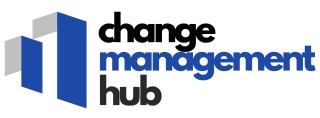-large-teaser.webp)
Understanding Change Management in Procurement
Grasping the Fundamentals of Transformative Management in Procurement
In the ever-evolving landscape of consumer packaged goods, understanding the intricacies of change management in procurement is crucial. The CPG industry is characterized by its complex supply chains, rapid product turnovers, and the constant pressure to innovate and reduce costs. Therefore, the ability to adapt procurement strategies effectively is indispensable for CPG companies aiming to remain competitive. Procurement teams in this industry must be agile, as they deal with fluctuating consumer demands, supplier management challenges, and the dynamics of sustainable sourcing. A strong grasp of change management principles can help procurement teams navigate these obstacles efficiently.- Supply Chain Dynamics: Managing supply chains in the CPG sector involves dealing with multiple suppliers and ensuring a reliable supply of raw materials. This requires a keen focus on supplier management strategies and real-time data to make informed decisions.
- Data-Driven Decision Making: Leveraging data insights can greatly enhance the procurement process. By adopting a data-driven approach, companies can optimize their procurement strategies to align with consumer needs and industry trends.
- Cost Management: Reducing procurement costs while maintaining quality is a constant challenge. Effective change management can provide structured solutions that help achieve this delicate balance.
- Adapting to Digital Transformation: Digital transformation plays a pivotal role in modern procurement. Embracing technology not only streamlines procurement processes but also allows for better chain management and real-time insights.
Challenges in Consumer Packaged Goods Procurement
Navigating Obstacles in the Procurement Arena
The consumer packaged goods (CPG) industry contends with unique challenges that frequently test the resilience and adaptability of procurement strategies. At the forefront, the volatile nature of raw materials and fluctuating supply chains demands swift and strategic responses. This unpredictability complicates the procurement process, influencing supplier management and cost considerations.
Data-driven insights play an instrumental role in navigating these challenges. Procurement teams must ensure that their decisions are supported by real-time data analytics. Modern supply chains are complex and require a seamless integration of data to keep them efficient and responsive to market changes. The balance between cost-efficiency and sustainable sourcing is a constant dilemma. Companies need to carefully evaluate the trade-offs between minimizing expenses and securing environmentally responsible sources.
The industry also grapples with the integration of advanced technology, posing both opportunities and challenges. Digital transformation, while potentially beneficial, necessitates significant investment and a recalibration of existing processes. For procurement specialists in the CPG industry, it's crucial to stay abreast of these developments to maintain competitiveness and drive operational excellence.
Moreover, supplier management and relationship building are pivotal. Companies must foster strong partnerships to ensure a steady supply of quality goods. This involves not just transactional exchanges but a collaborative approach to solving issues and co-developing solutions that benefit the entire supply chain.
To gain a deeper understanding of managing these logistical complexities in procurement, explore effective campaign logistics strategies.
Strategies for Effective Change Management
Implementing Innovative Approaches for Change
In the competitive Consumer Packaged Goods (CPG) industry, implementing effective change management strategies in procurement is essential for success. This task can be daunting, but there are several proven approaches CPG companies can adopt. Let’s explore these strategies, offering actionable insights that will aid procurement teams in their journey towards enhanced efficiency.
Collaboration Across Supply Chains
Companies in the consumer goods sector must foster strong collaboration with suppliers. By enhancing supplier management, firms can ensure a more resilient supply chain, which is crucial for sustainable sourcing and reducing disruptions. Building authentic partnerships with suppliers has been shown to help in the seamless flow of raw materials and products, minimizing downtime and potential cost overruns.
Data-Driven Decision Making
Real-time data insights play a significant role in optimizing procurement strategies. Data-driven approaches allow teams to better forecast demand, manage inventories, and make informed purchasing decisions that align with consumer demand and industry trends. Procurement teams leveraging data can avoid costly overstock or stockouts, thus maximizing efficiency.
Digital Transformation and Technological Adoption
The integration of technology in procurement processes can significantly streamline operations. Digital transformation initiatives such as adopting procurement solutions powered by advanced analytics or AI can provide CPG brands with a competitive edge. These tools help monitor and manage the supply chain effectively and create agile, responsive environments where issues are quickly identified and addressed.
Embracing Sustainable Practices
Sustainable sourcing is no longer a nice-to-have in the CPG realm; it's a necessity. Forward-thinking companies are now incorporating eco-friendly practices into their procurement strategies. By doing so, they not only contribute positively to environmental goals but also improve brand reputation among increasingly conscious consumers.
As the industry learns to adapt to these approaches, companies can ensure a smooth transition in procurement processes, minimizing disruptions and optimizing performance. For additional strategies on enhancing business processes, check our in-depth exploration on enhancing business processes with management solutions.
Leveraging Technology for Procurement Solutions
Technology Driving Procurement Innovation
In today’s evolving landscape, leveraging technology in procurement strategies has become vital for consumer goods companies to remain competitive. The shift towards digital transformation across the CPG industry has been instrumental in optimizing procurement operations, enhancing supply chains, and fostering better supplier management.- Data-Driven Decision Making: Utilizing real-time data insights is essential for procurement teams to make informed decisions. Data-driven strategies help companies monitor the supply chain more effectively, enabling swift responses to disruptions and changes in demand for raw materials or finished products.
- Supply Chain Optimization: Advanced technologies provide procurement teams with the tools to strengthen supply chains, improve the visibility of goods movement, and drive efficiencies across the chain. These improvements reduce costs and enhance performance for CPG companies, creating a competitive edge.
- Supplier Collaboration Tools: Modern supply chain management systems offer platforms for enhanced communication and collaboration with suppliers. These tools facilitate better supplier management by promoting transparency and fostering sustainable sourcing practices throughout the consumer goods network.
- Automation and Process Efficiency: Automation of routine procurement tasks, such as order processing and inventory management, can significantly boost efficiency. By freeing up teams to focus on strategic functions, companies can improve procurement strategies and enhance overall productivity.
Case Studies: Successful Change Management in Procurement
Real-World Examples of Change Management Success
In the dynamic world of consumer packaged goods (CPG), change management is crucial for procurement teams to stay competitive. Let's explore some successful case studies that highlight effective strategies and solutions in this sector.
Case Study 1: Digital Transformation in Procurement
One leading CPG company implemented a comprehensive digital transformation strategy to enhance its procurement processes. By leveraging real-time data and advanced analytics, the company improved its decision-making capabilities. This data-driven approach allowed them to optimize their supply chain management, reducing costs and improving supplier management. The integration of digital tools helped the company achieve sustainable sourcing and better manage raw materials, ultimately enhancing their procurement strategies.
Case Study 2: Supplier Collaboration for Cost Efficiency
Another example comes from a CPG brand that focused on strengthening its relationships with suppliers. By fostering open communication and collaboration, they were able to negotiate better terms and achieve cost efficiencies. This approach not only improved the supply chain but also ensured a steady flow of consumer goods, meeting the demands of the market. The insights gained from these partnerships helped the company refine its procurement strategies and maintain a competitive edge in the industry.
Case Study 3: Implementing Sustainable Sourcing Practices
A CPG company committed to sustainability revamped its procurement processes to focus on sustainable sourcing. By prioritizing eco-friendly raw materials and working closely with suppliers who shared their values, the company was able to enhance its brand image and appeal to environmentally conscious consumers. This strategic shift not only supported the company's sustainability goals but also contributed to long-term cost savings and improved supply chain resilience.
These case studies demonstrate the importance of effective change management in the CPG industry. By embracing digital transformation, fostering supplier collaboration, and prioritizing sustainability, companies can enhance their procurement strategies and achieve lasting success.
Future Trends in Procurement and Change Management
Projected Movements in Procurement and Change Management
The landscape of procurement within the consumer packaged goods (CPG) industry is continually evolving. Here, we aim to explore the coming trends likely to shape this dynamic field.In the ever-competitive CPG industry, companies must continuously adapt their procurement strategies to meet the changing demands of the market. As global supply chains become more complex and consumer expectations rise, procurement teams are shifting their focus towards more agile and responsive supply chain management practices.
Greater Emphasis on Sustainable Sourcing
A prominent trend involves sustainable sourcing. CPG brands are increasingly expected to source their raw materials sustainably, a shift driven by both regulatory pressures and evolving consumer values. As such, procurement strategies are increasingly incorporating environmental and social governance criteria when selecting suppliers. This change not only strengthens brand reputation but also ensures long-term sustainability for goods CPG.
Data-Driven Decision Making
The role of data in procurement continues to expand. Data-driven insights are becoming critical for improving supply chain efficiencies and reducing costs. Real time data allows for more agile decision making, enabling companies to respond swiftly to disruptions and opportunities. This need for instant data is transforming how procurement teams operate, emphasizing the importance of robust data management systems.
Digital Transformation and Technological Integration
Digital transformation remains at the forefront of procurement innovation. As CPG companies embrace new technologies, such as AI and machine learning, these tools help optimize procurement workflows, improve supplier management, and aid in forecasting demand more accurately. These technological integrations are creating smarter, more interconnected supply chains that benefit not only companies but also the consumer.
Collaborative Procurement Ecosystems
Lastly, collaborative ecosystems are becoming essential. CPG industries are building stronger partnerships within their supply networks, promoting transparency and shared goals between suppliers and manufacturers. By working closely with these stakeholders, CPG companies can enhance the efficiency of their procurement processes, ultimately leading to better products and consumer satisfaction.













